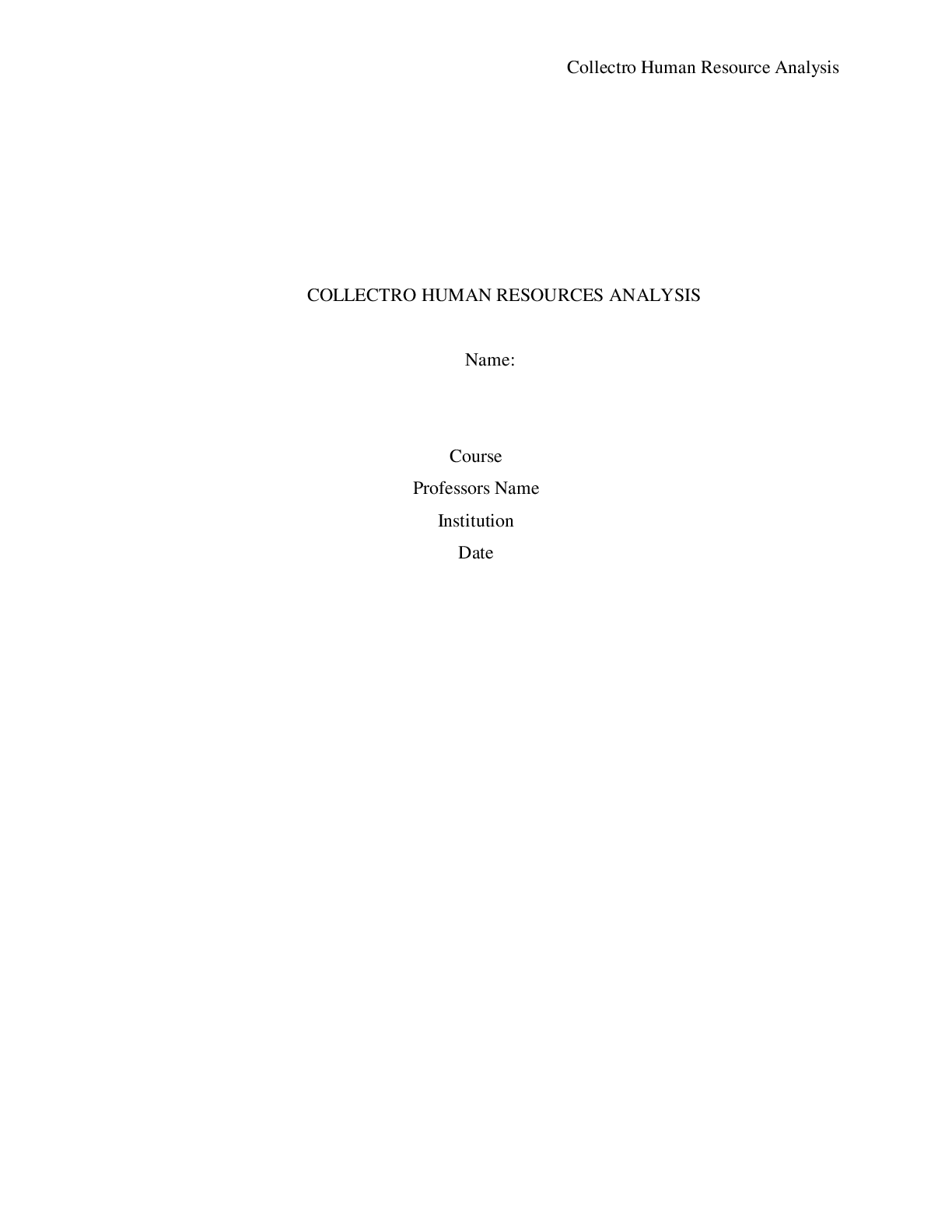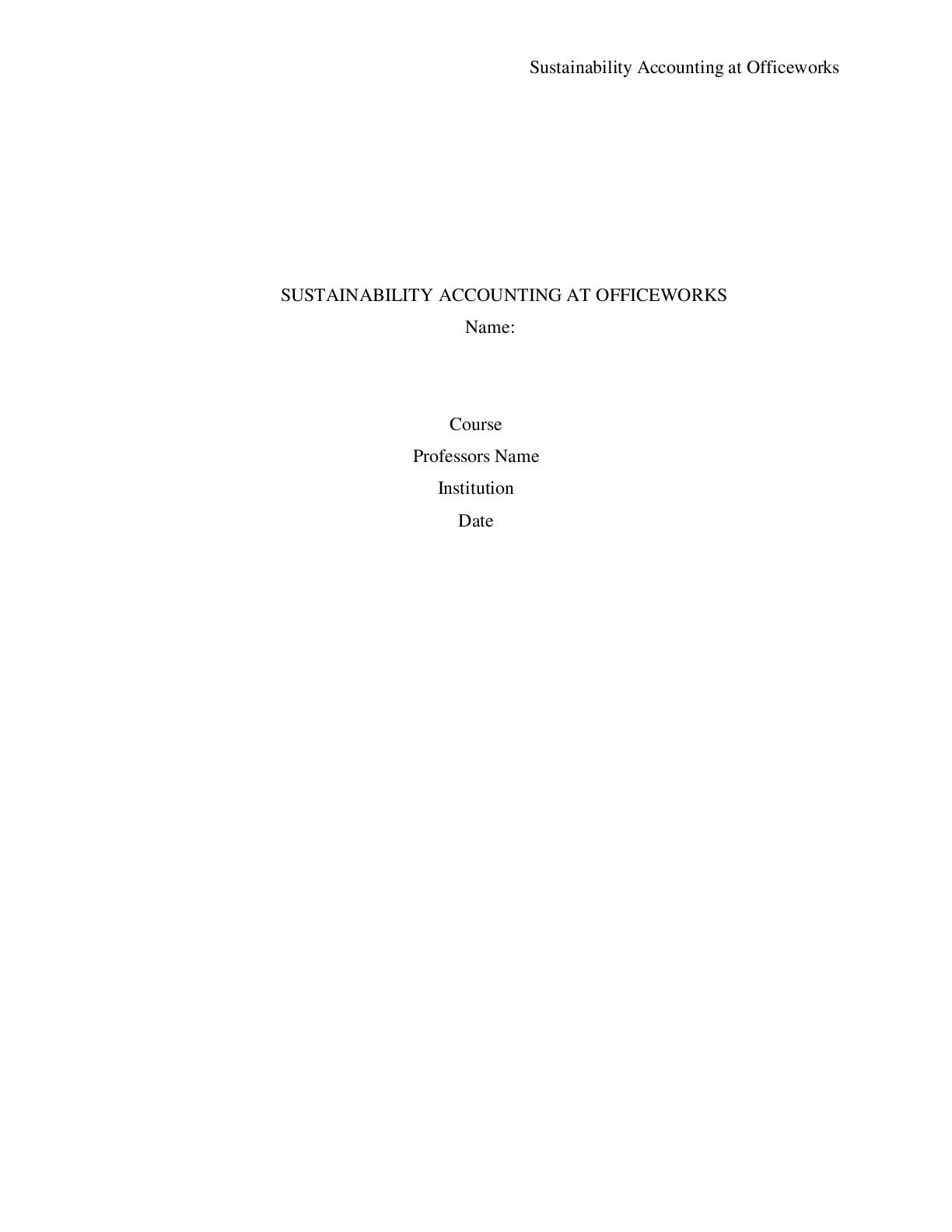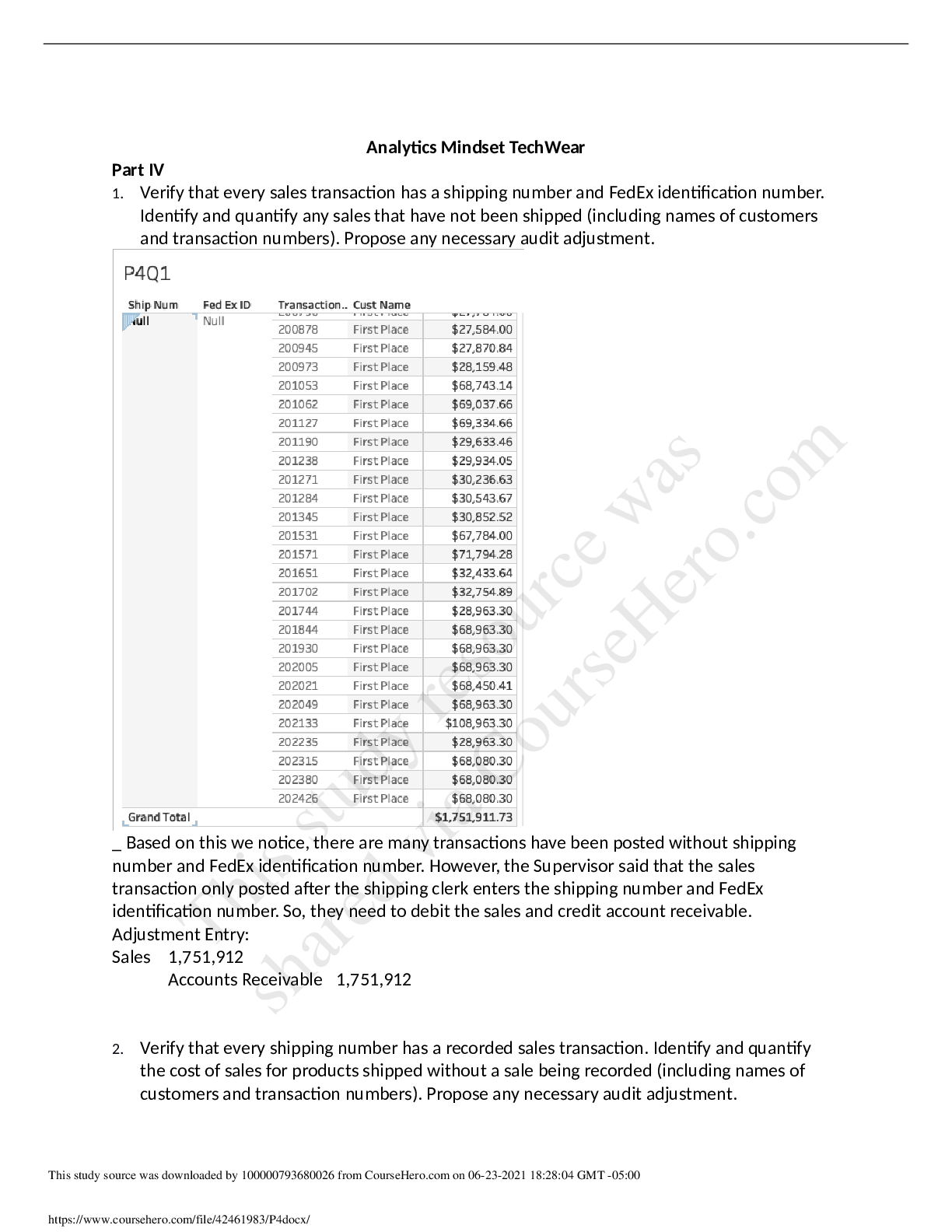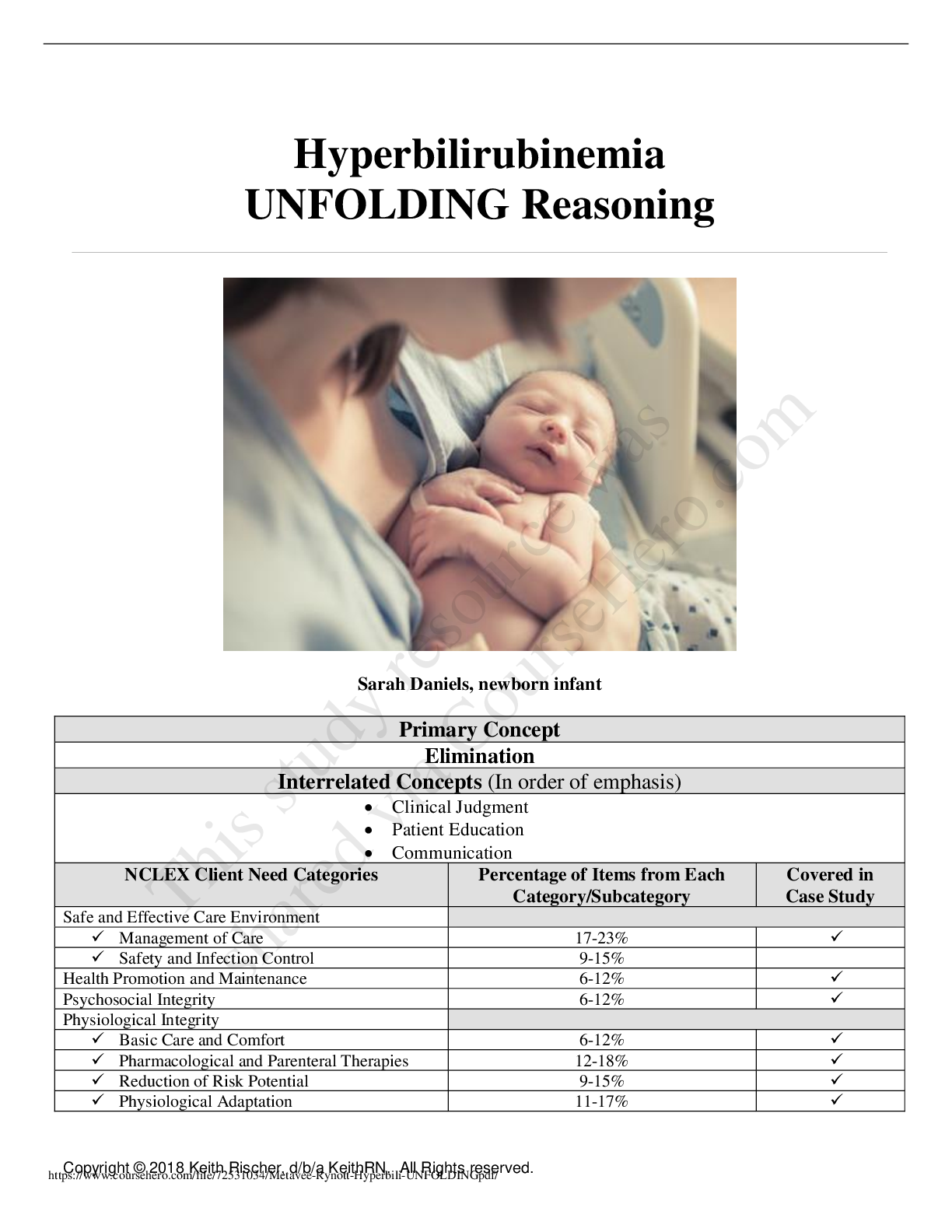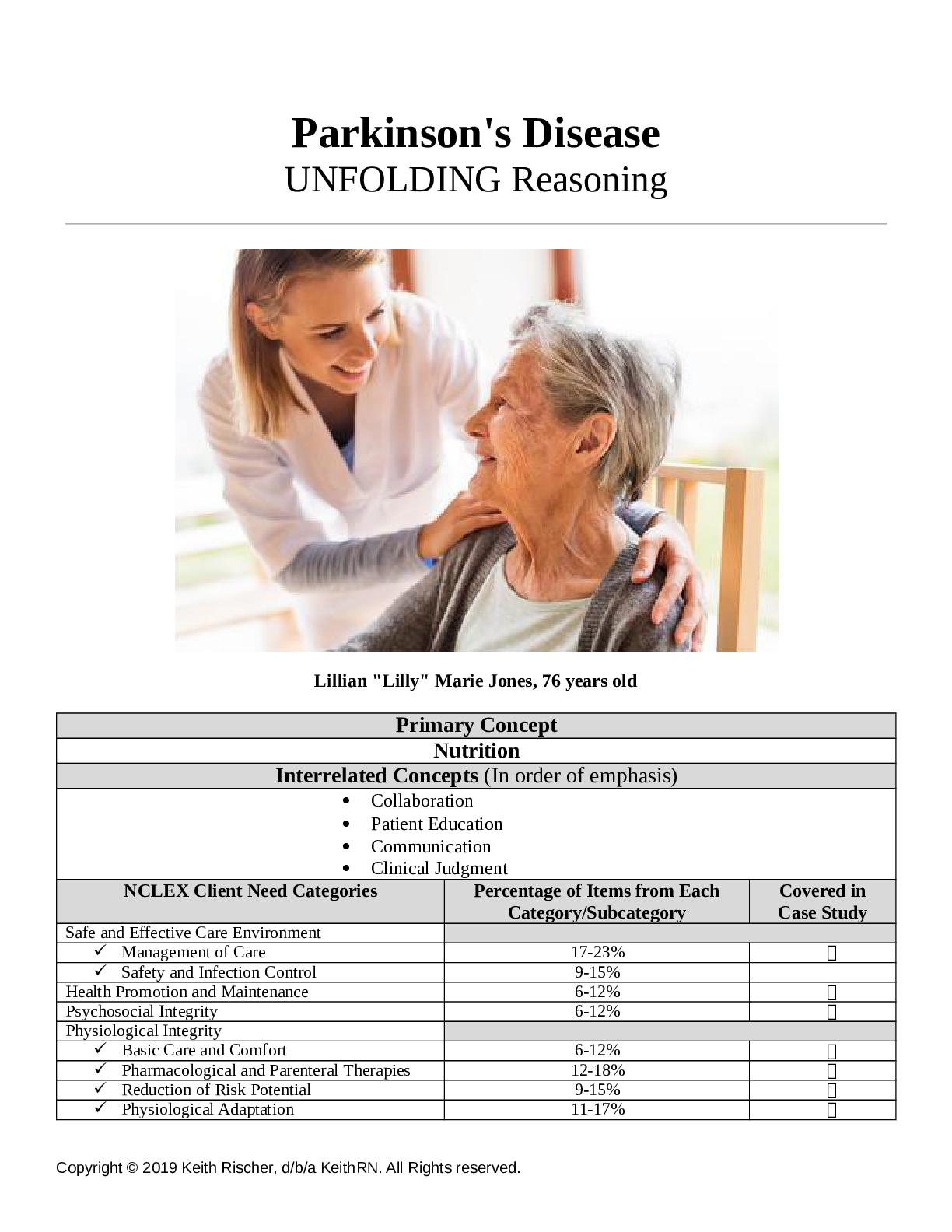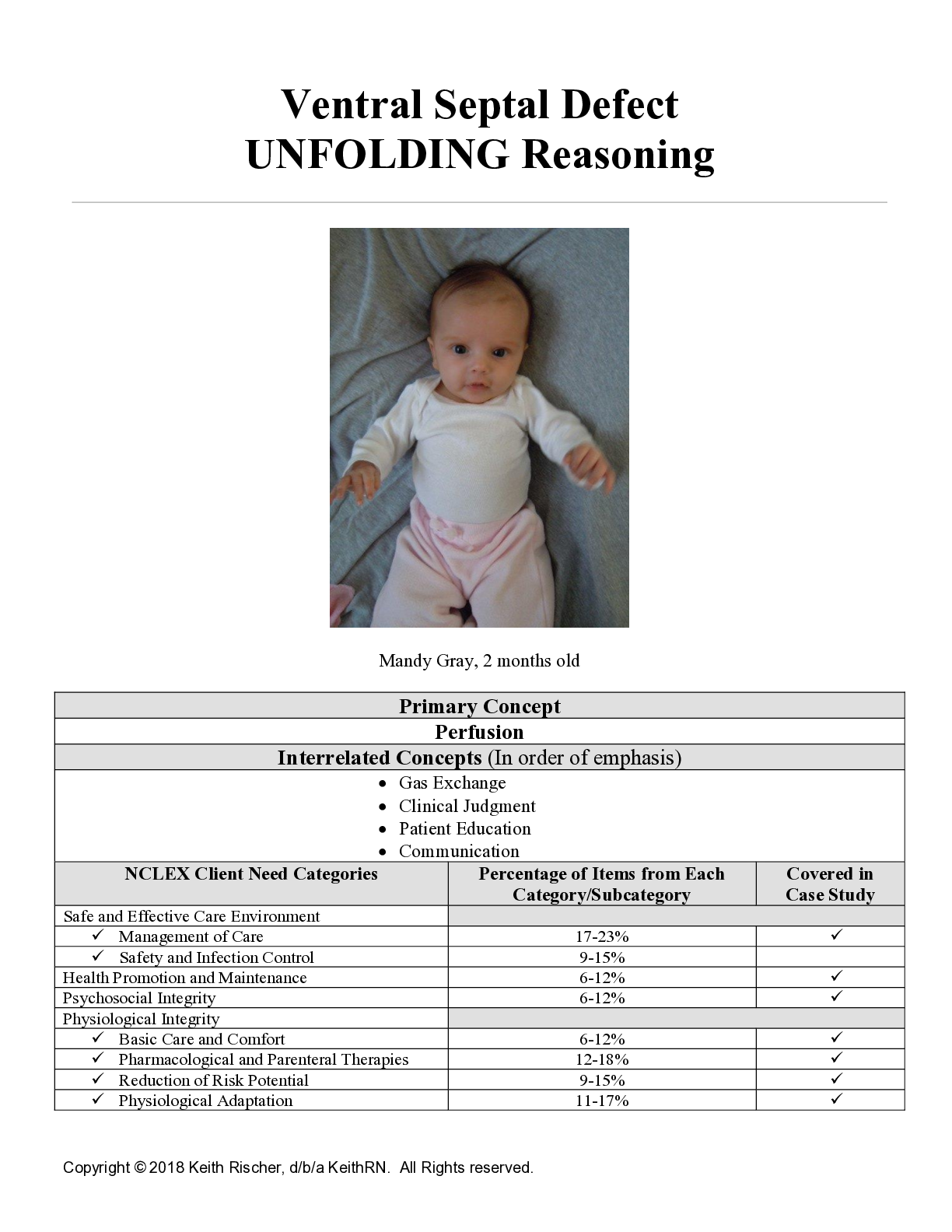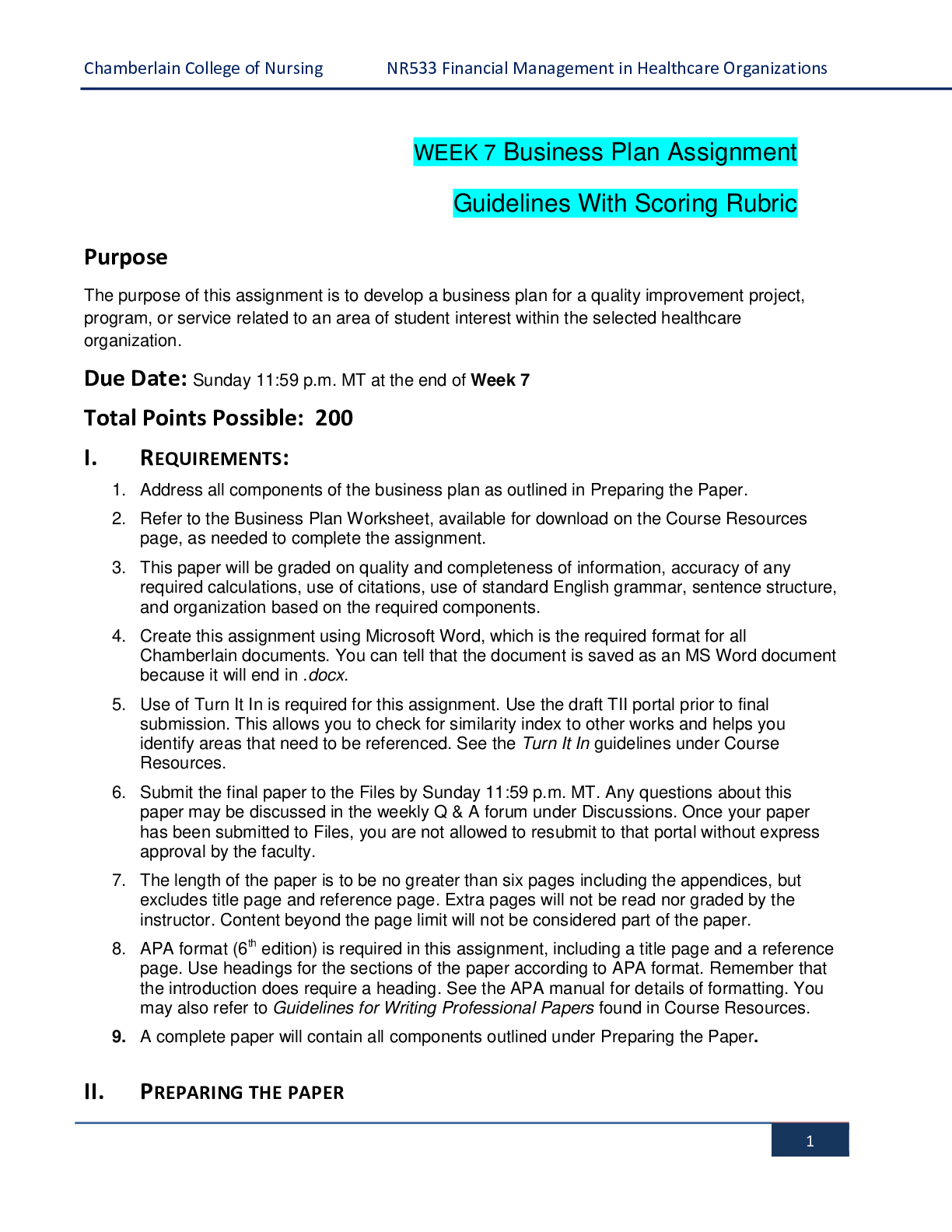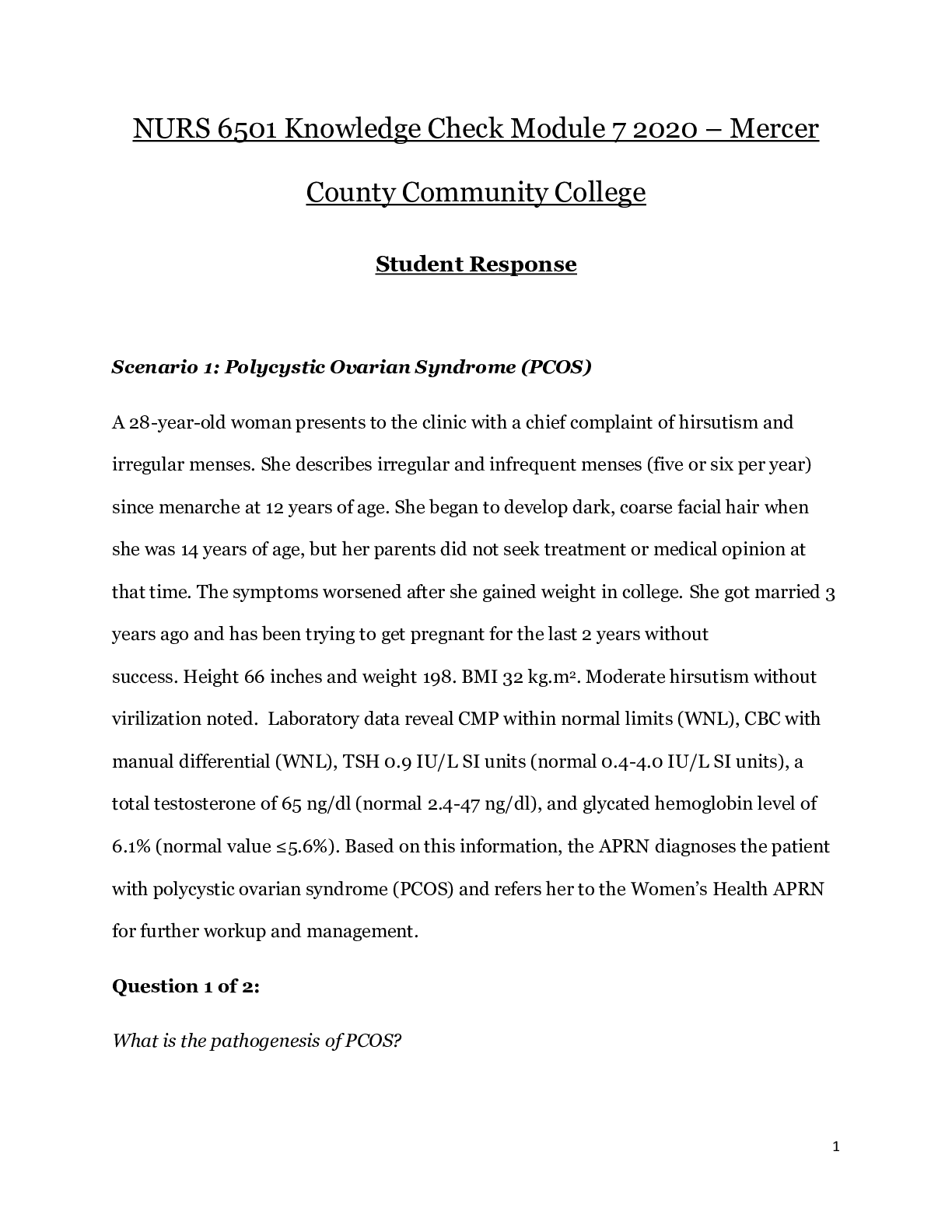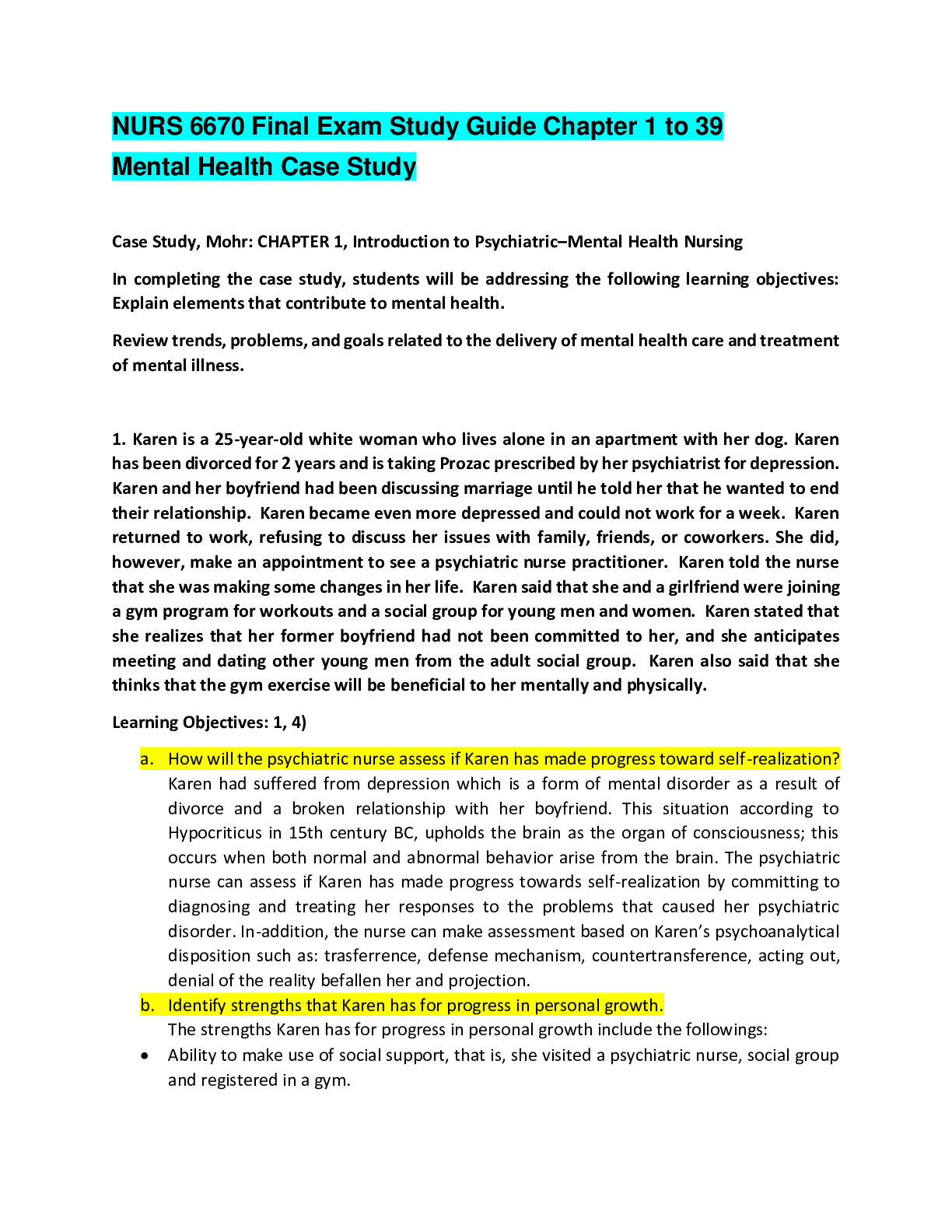*NURSING > CASE STUDY > [solved] Homelessness Community Health Reasoning, George Mayfield, 68 years old. (All)
[solved] Homelessness Community Health Reasoning, George Mayfield, 68 years old.
Document Content and Description Below
Homelessness Community Health Reasoning George Mayfield, 68 years old Primary Concept Health Promotion Interrelated Concepts (In order of emphasis) • Collaboration • Patient E... ducation • Communication • Addiction • Clinical Judgment History of Present Problem: George Mayfield is a 68-year-old African American male with a past history of hypertension, but has not taken his meds the past year because it was too much bother and he felt fine. He is seen at a clinic that serves the homeless in a large metropolitan community. George came to the clinic because of a headache that has been persistent the past week and blurred vision. His clothing is dirty and he has a strong body odor as well as smelly feet. His shoes are shabby and he has lots of callouses on his feet. George is missing many teeth and those that remain are yellow and brown with dental decay. When the nurse reviewed the health screening questions, George admitted that he has had a productive cough with occasional blood- tinged yellow mucus the past couple weeks. His initial BP is 188/96. Personal/Social History: George is veteran who served in Vietnam. He has struggled with alcohol abuse in the past but denies ETOH use in the past year. He has been homeless since he lost his job as a mechanic ten years ago and currently lives in his car, a 1980 Cadillac, with Milo, his white poodle. He has never married and has no close friends or relatives with whom he stays in contact. He smokes one pack of cigarettes a day. What data from the histories are RELEVANT and must be interpreted as clinically significant by the nurse? RELEVANT Data from Present Problem: Clinical Significance: History of hypertension Patient has not taken his meds the past year because it was too much bother and he felt fine. Headache with blurred vision Patient came to clinic with a headache that has been persistent the past week and blurred vision. Productive Cough Patient admitted that the cough occasionally produces blood-tinged yellow mucus the past couple of weeks. BP Initial BP is a little on the high side. Patient has history of hypertension. Smokes One pack per day. Poor hygiene Clothing and shoes are dirty and shabby. Patient has body odor as well as smelly feet. He has lots of callouses on his feet. Patient is missing many teeth and remaining teeth are yellow and brown with dental decay. RELEVANT Data from Social History: Clinical Significance: Homeless Veteran Struggled with alcohol abuse Lost job Lives in his car with dog Never married/no close friends or family Clothing is shabby and has poor hygiene Homeless for last 10 years. Served in Vietnam. Patient denies ETOH use in the past year. Was a mechanic and lost job 10 years ago making him homeless. Lack of adequate sleep and comfort. Does not have any friend or close relatives with whom he stays in contact with. Strong body odor as well as smelly feet. Lots of callouses on his feet. He is missing many teeth and the remaining teeth are yellow and brown with dental decay. Patient Care Begins: Current VS: P-Q-R-S-T Pain Assessment: T: 97.6 F/36.4 C (oral) Provoking/Palliative: Nothing/nothing P: 90 (regular) Quality: Dull ache R: 18 (regular) Region/Radiation: head BP: 182/90 Severity: 7/10 O2 sat: 90% room air Timing: continuous What VS data are RELEVANT and must be interpreted as clinically significant by the nurse? RELEVANT VS Data: Clinical Significance: R: 18 (regular) BP: 182/90 O2 sat: 90% room air Quality: “Dull ache,” Region/Radiation: “head,” Severity: “7/10,” Timing: “Continuous.” Respiratory rate is a little high. Could be due to the pain that the patient is experiencing. Patient has a history of hypertension and has not been taking his medication for the past year. His BP is a little lower than his initial BP of 188/96. Patients O2 sat is a little low on room air. Supplemental oxygen via nasal cannula could help to bring his O2 sat up. Headache could be due to the patients high BP. With the patients history of hypertension and not taking his medication prescribed to him this could be causing his headache to be continuous and rated a 7/10. Current Objective Assessment: GENERAL APPEARANCE: Clothing soiled, hair and beard unkept. Has foul body odor, shabby shoes and smelly feet with callouses. Teeth are yellow stained, and many are missing with obvious poor dentition RESP: Breath sounds clear bilaterally upon inspiration, coarse rhonchi heard in bases bilaterally upon expiration, occasional harsh productive cough with blood-tinged yellow mucus CARDIAC: Pink, warm & dry, no edema, heart sounds regular with no abnormal beats, pulses strong, equal with palpation at radial/pedal/post-tibial landmarks NEURO: Alert & oriented to person, place, time, and situation (x4) GI: Abdomen flat, soft/nontender, bowel sounds audible per auscultation in all four quadrants GU: Voiding without difficulty, urine clear/yellow. Voids three times during the night SKIN: Dirt on hands and under fingernails, fungal toenails present on both feet, feet persistently itch, are swollen, macerated and moist with peeling of the skin layers between toes on both feet. Current Subjective Assessment: SUICIDAL RISK: Moderate. Was a veteran so could have PTSD. Homeless with no support system from family and friends. Has history of alcohol abuse. SLEEP ASSESSMENT: Patient sleeps in vehicle with his poodle so most likely doesn’t get adequate sleep and does not have access to hygiene facilities to shower. NUTRITIONAL ASSESSMENT: Could be very poor since the patient is homeless and lives in his car. ETOH ABUSE: Patient denies any use in the last year but has struggled with alcohol abuse in the past. DEPRESSION ASSESSMENT: Patient has never married and has no close friends or family with whom he stays in contact with. Homeless and in poor health. What assessment data is RELEVANT and must be interpreted as clinically significant by the nurse? RELEVANT Assessment Data: Clinical Significance: General Appearance: Clothing soiled, hair and beard unkept. Has foul body odor, shabby shoes and smelly feet with callouses. Teeth are yellow stained, and many are missing with obvious poor dentition. Mr. Mayfield’s appearance and hygiene can affect his overall health. Poor dental hygiene can result in heart disease due to the bacteria and can enter the bloodstream. Resp: Course rhonchi heard in bases bilaterally upon expiration, occasional harsh productive cough with blood- tinged yellow mucus. Mr. Mayfield may have an infection such as bronchitis or pneumonia. With living in his car with his dog Mr. Mayfield does not have the proper environment to ensure quality health. Skin: Dirt on hands and under fingernails, fungal toenails present on both feet, feet persistently itch, are swollen, macerated and moist with peeling skin layers between toes on both feet. Mr. Mayfield possibly has athlete’s foot due to his poor hygiene and being homeless and not having access to the proper hygiene facilities. RELEVANT SUBJECTIVE Assessment Data: Clinical Significance: Sleep assessment: Patient lives/sleeps in his vehicle with his poodle. Has had a persistent headache for the past week with blurred vision. Mr. Mayfield does not have the proper conditions for getting a good night’s sleep. Mr. Mayfield also doesn’t have access to proper hygiene facilities, so it is affecting his overall health. With the persistent headache it is possible that he is not comfortable to sleep. Nutritional Assessment: Homeless and lives in car. ETOH Abuse: Denies any use in the last year but has a past history of abuse. Depression Assessment: Patient has no family or friends that he stays in contact with. He has never been married. Being homeless Mr. Mayfield does not have access to proper food storage and preparation. He would have to rely on food pantries and soup kitchens for meals. Patient could be withholding he truth about his ETOH abuse to avoid consequences. Having a past history Mr. Mayfield is more susceptible to further abuse. It is possible that with no close friends or family and having never been married Mr. Mayfield could be depressed about being along except for his poodle. 1. List the physical and psychosocial problems that are adversely impacting his health? What are the physiological OR psychosocial causes of the problem? Physical Problem(s) Cause and/or Pathophysiology Elevated BP: 182/90 (Hypertension) Persistent headache for one week with blurred vision R: 18 and productive cough with occasional blood-tinged yellow mucus. Feet are persistently itch, are swollen, macerated and moist with peeling of the skin layers between toes on both feet. Dental Issues History of hypertension and patient does not take medication for the issue. Could be caused by hypertension and could also be causing his blood pressure to be elevated. Could indicate an infection in the lungs. His lung sounds had course rhonchi heard and his O2 sat is only 90% on room air. Issues with his feet could be a point of infection. The itching could make the patient uncomfortable and be partially causing the elevated blood pressure. Lack of access to dental care. Missing many teeth, rest are yellow and brown with dental decay. Psychosocial Problem(s) Cause and/or Pathophysiology General Appearance: Clothing soiled, hair and beard unkept. Has foul body odor, shabby shoes and smelly feet with callouses. Teeth are yellow stained, and many are missing with obvious poor dentition. No close friends or family. Never been married. Homeless Could cause issues with socializing with others even though Mr. Mayfield is homeless and lives in the car with his poodle. The issues with his teeth could cause an infection that could affect the heart. With no close family and friends. Mr. Mayfield is alone except for his poodle. Has a lack of support system. Lives in his vehicle. 2. Is there a RELATIONSHIP between his social history and physical/psychosocial problems that may have contributed to the development of another problem? Physical Problem(s) What then Developed? Not taken medication for hypertension Issues with hygiene Occasional harsh productive cough with blood-tinged yellow mucus. Elevated BP, persistent headache for a week. Mr. Mayfield has issues with his feet and hygiene could be causing an infection. Patient could have an infection in the lungs that could affect the heart. Psychosocial Problem(s) What then Developed? Poor hygiene/dental Homeless, living in car ETOH abuse The bacteria in the mouth from the poor dental hygiene could cause bacteria to get into the bloodstream and could affect the heart or the lungs. He has no close friends or family that he keeps in contact with. Sleeps in his car. History of abuse. Patient denies use in the past year. 2. What are the priority physical/psychosocial problems and resultant assessments? PRIORITY Problems: PRIORITY Nursing Assessments: Hypertension Obtain patient medical history such as smoking and family history. Obtain two or more BP measurements to determine hypertension. Obtain patients height and weight. Headache/Blurred Vision Obtain patients vital signs, and level of pain. Obtain a cardiovascular assessment and palpation of the head and face. Poor hygiene Assist patient in recognizing the importance of good hygiene. Ascertain how the patient cares for him/herself. Examine patient’s clothing, skin, mouth, hair and nails. Dental Issues Assessment of oral cavity and give resources for help with dental. What are the nursing interventions at the primary, secondary and tertiary level of care? (Nursing roles to consider are the following: educate, advocate, manage, collaborate, leadership) Practice Settings/Community Resources: Pick the practice settings that might offer resources to the patient. Describe the resources offered and/or the nursing role for the selected settings. Only choose the relevant practice settings. Practice Setting Community Resources Role of Nurse Public Health Information about medications, food, medical help, and prevention of violence. Provide resources to a patient to promote healthy lifestyle. Forensic Clinic Gives health care services, support and resources to patients. Provide care to a patients such as testing, treatment, and referrals. School . Occupational Resources for individuals to find employment. Faith-Based Church, shelters Home Health/hospice Senior Center Has resources to help with those that may need a low income/no income place to stay. Homeless shelter Provides shelter and resources to individuals that need a place to stay. Transcultural: Describe how the cultural factors relate to the care of this patient in the categories listed below. information on themselves. Beliefs may not allow them to take certain medications, treatment and care. Has a higher risk of developing some conditions then other races/ethnicities. Environmental Health Being homeless the patient does not have the proper environment to ensure healthy living. Vulnerable Population: Being homeless the patient is more susceptible to disease and other health issues. [Show More]
Last updated: 1 year ago
Preview 1 out of 9 pages

Reviews( 0 )
Document information
Connected school, study & course
About the document
Uploaded On
Nov 02, 2021
Number of pages
9
Written in
Additional information
This document has been written for:
Uploaded
Nov 02, 2021
Downloads
1
Views
75



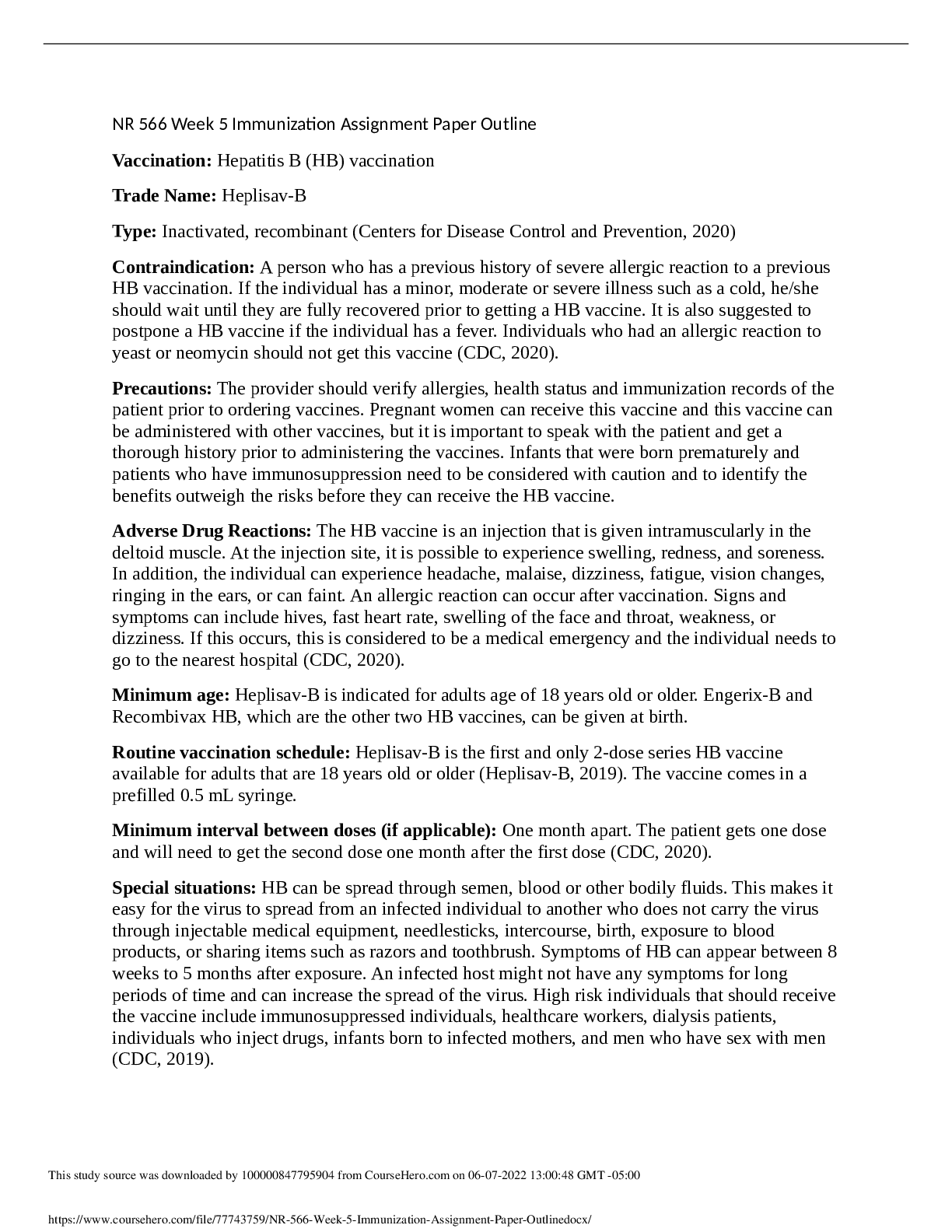

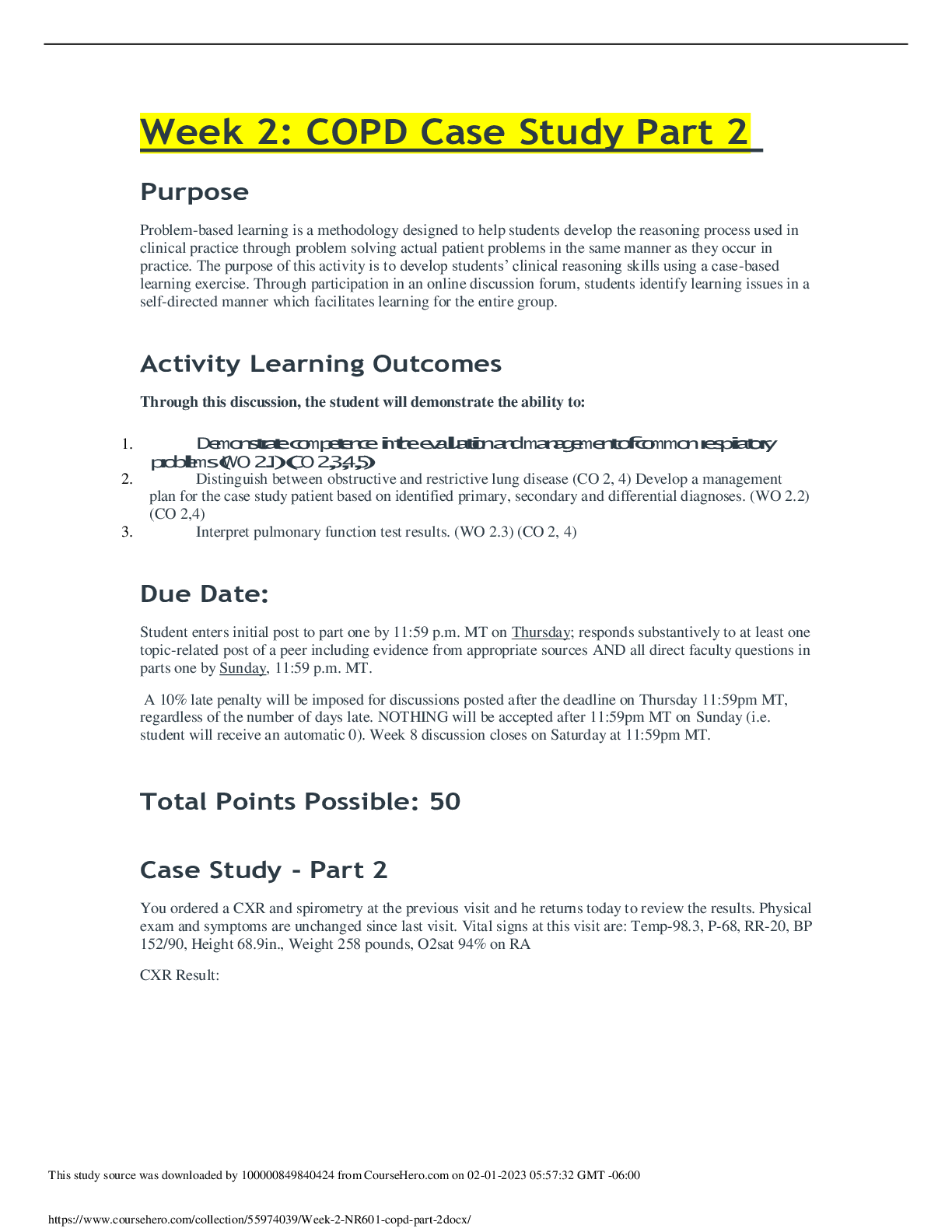
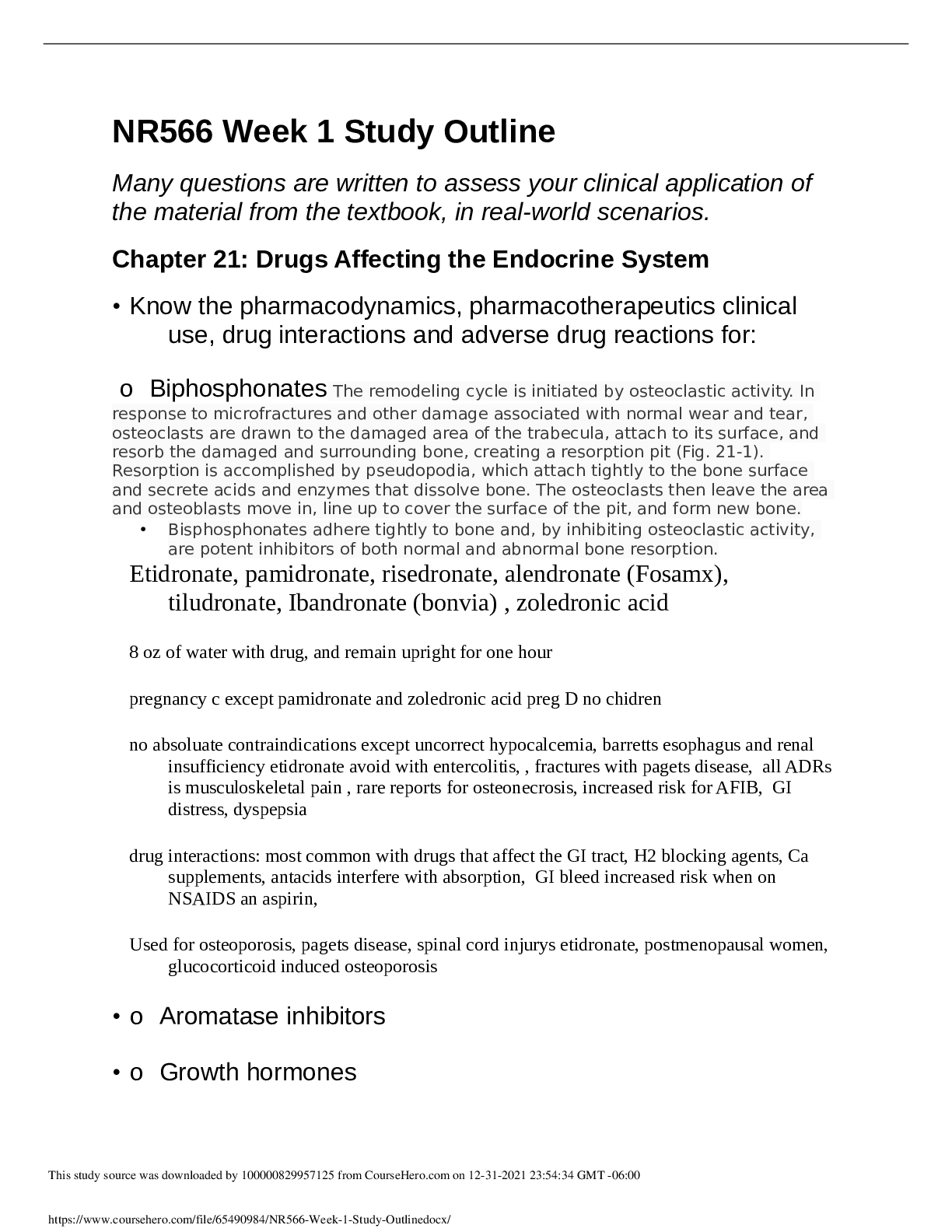

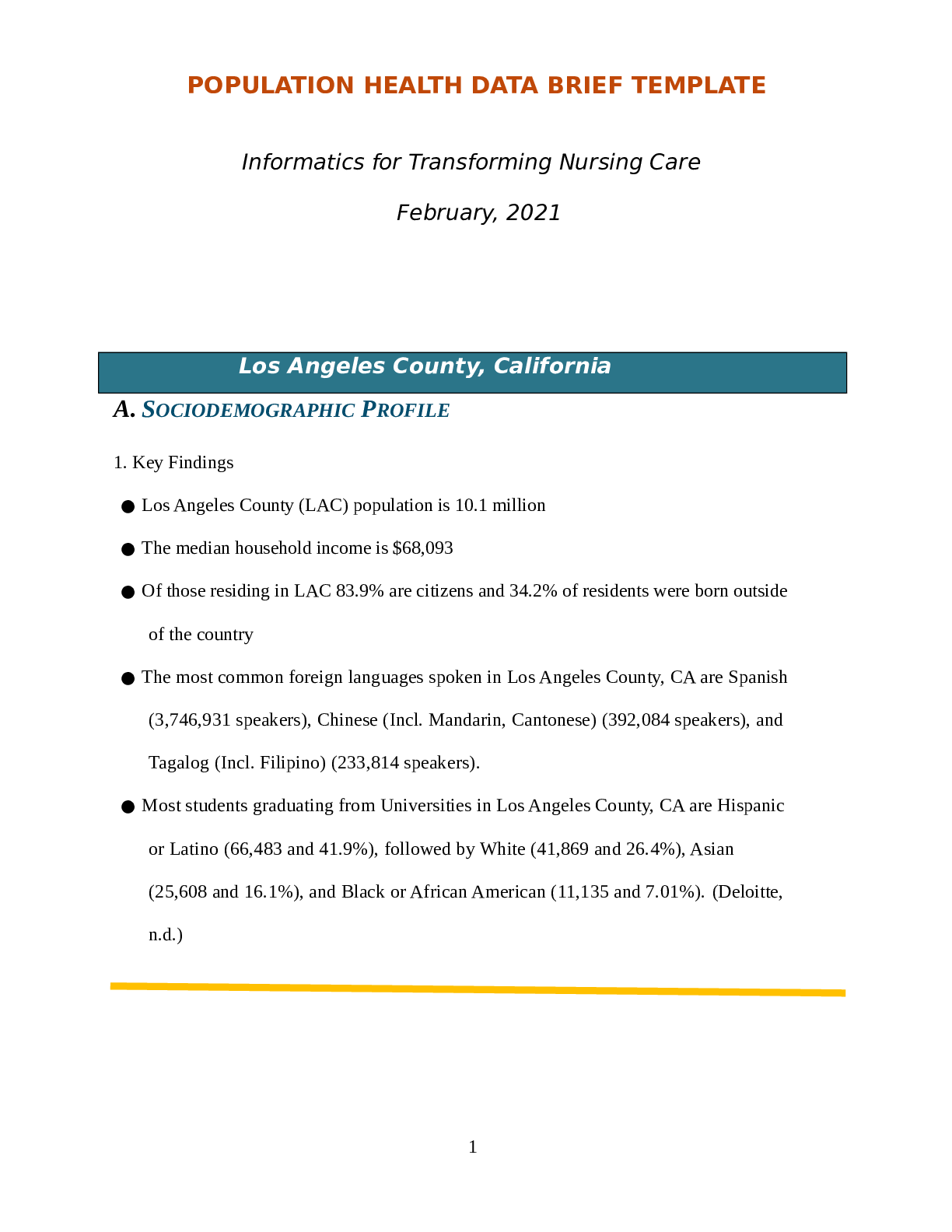

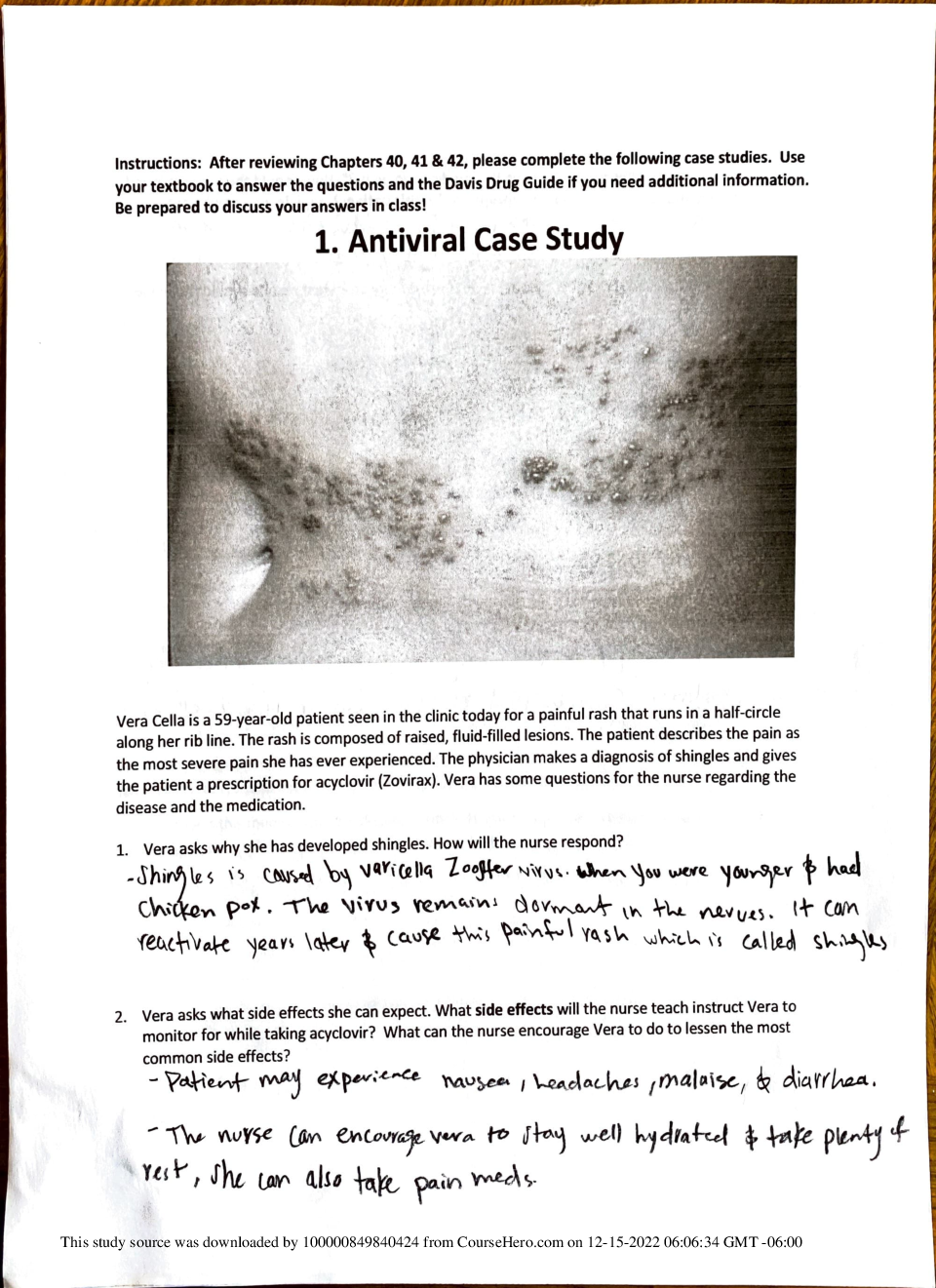


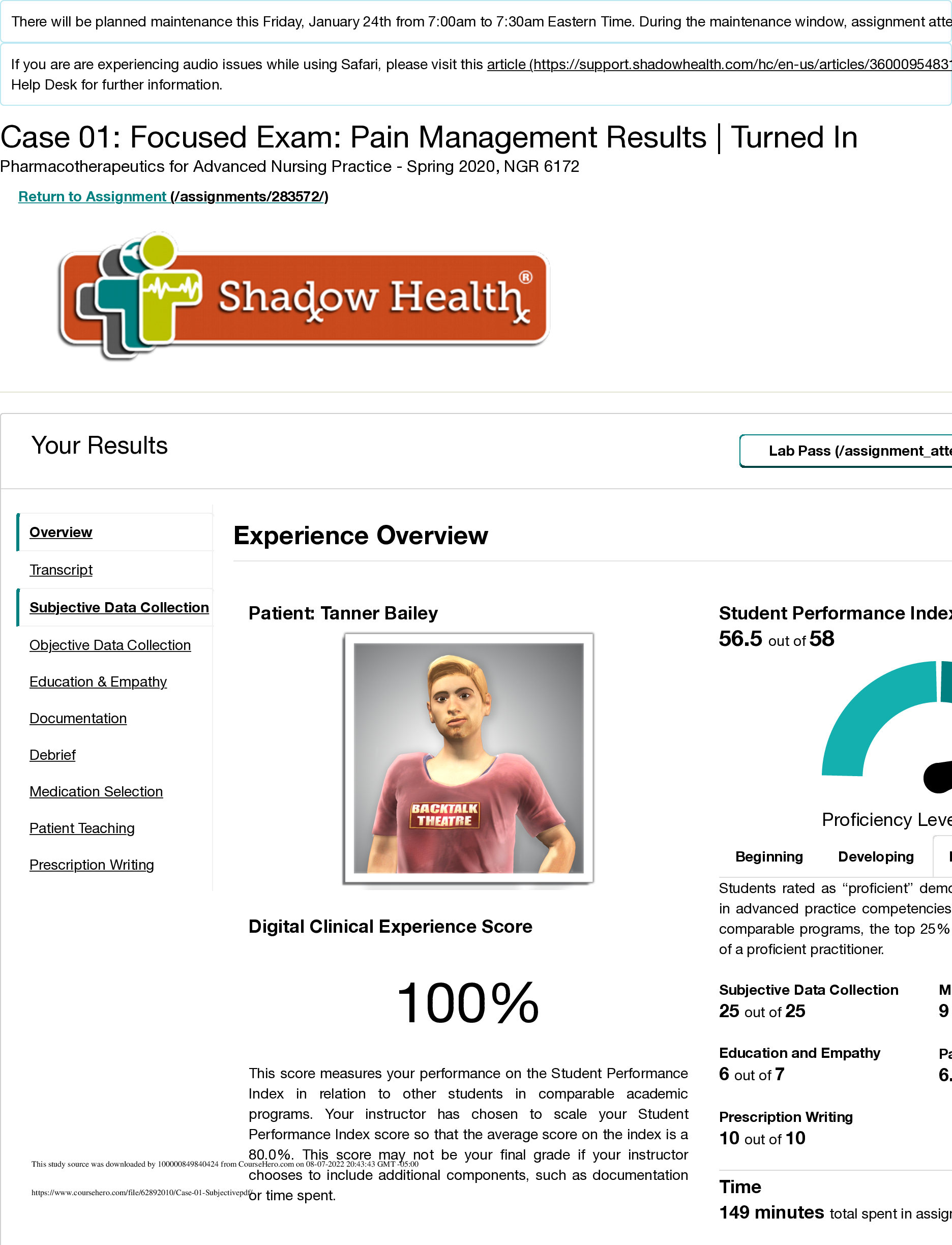
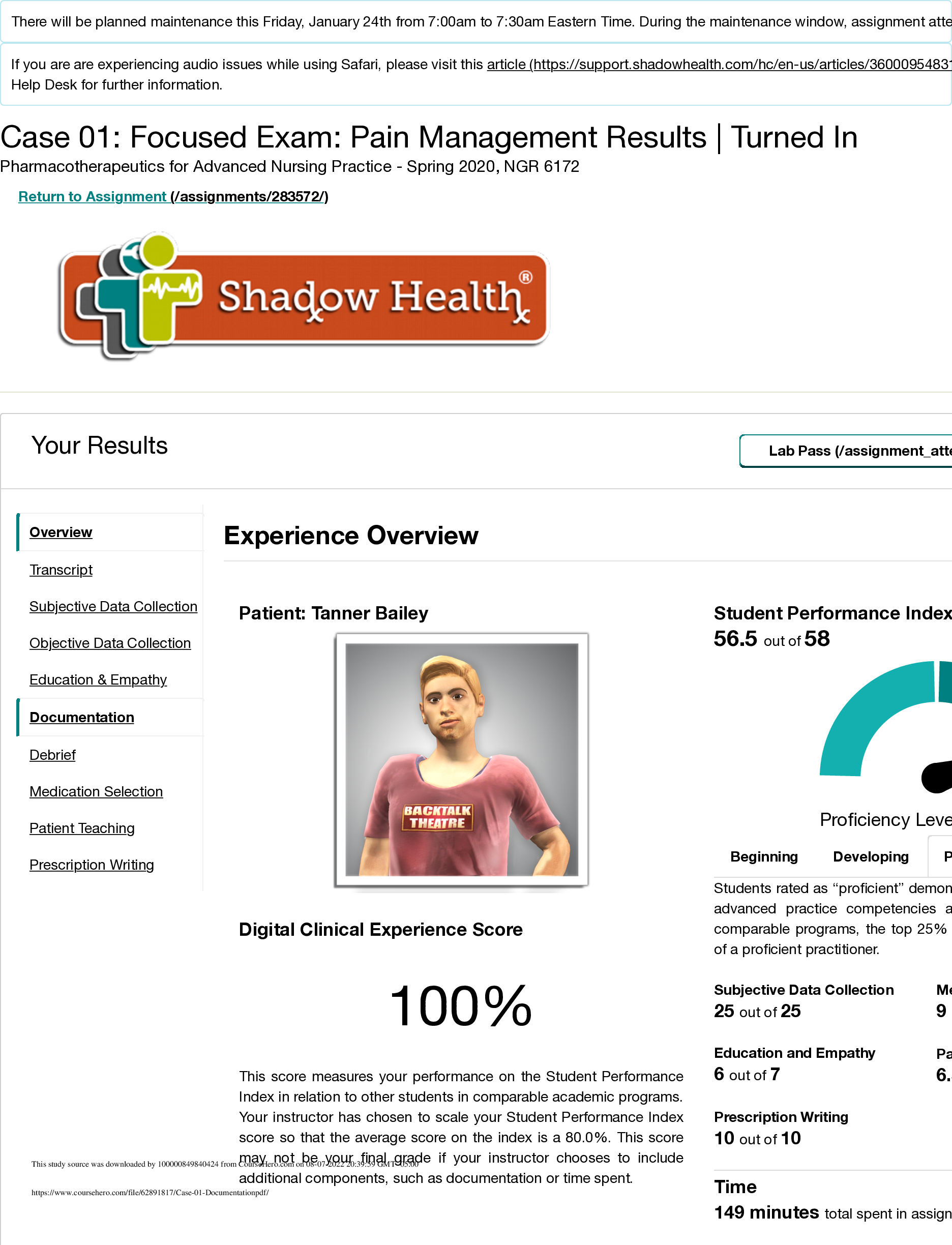

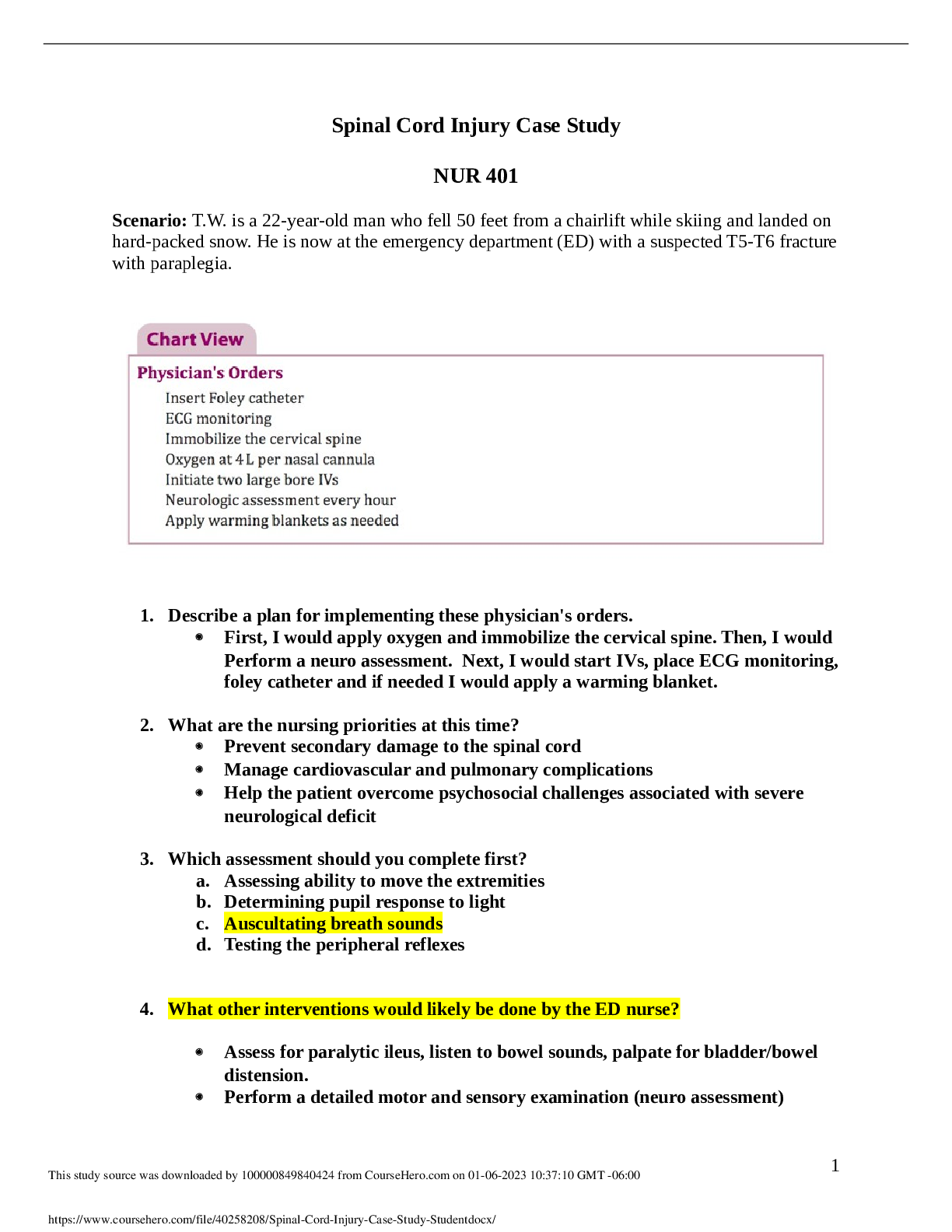

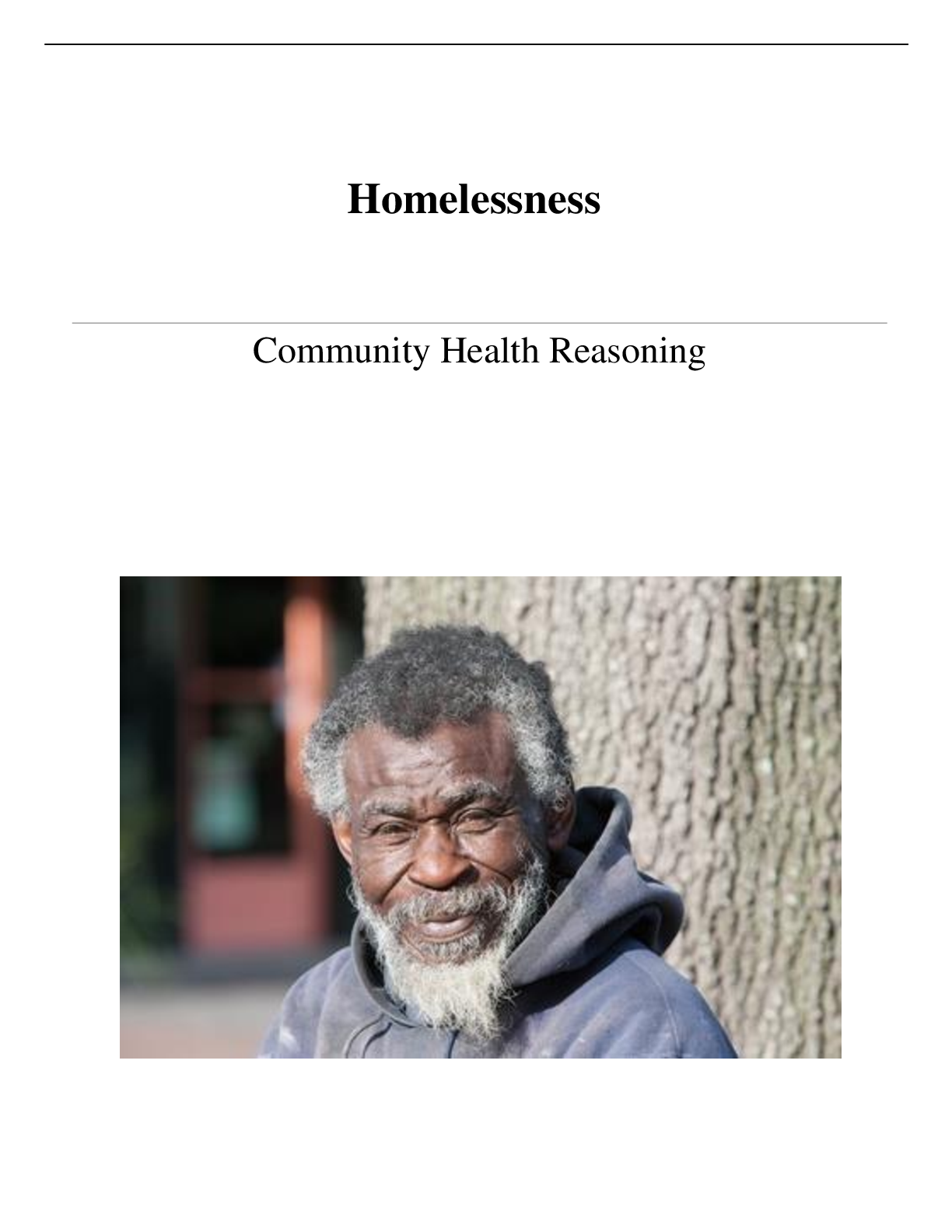
 Correct Study Guide, Download to Score A.png)

